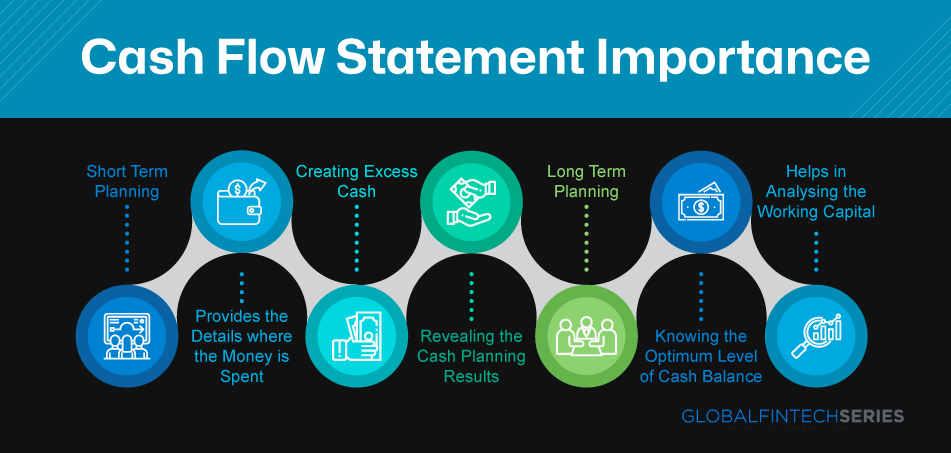What are some readily implementable cost-cutting strategies that can be employed at present?
How to slash my expenses?
How to manage my cash flows?
Is this what you are worried about something?
Then you’re on the right track.
Without proper management of its finances, operations, and investments, any company, no matter how successful, can run into serious cash flow issues. We have curated a comprehensive compilation of ten cost-cutting strategies that can be implemented by enterprises to effectively endure a period of financial strain.
Introduction
To assist small businesses in navigating the current hard economic climate, these are well-researched Top 10 tips to follow. The objective of these cost-cutting techniques is to decrease expenditures while maintaining both the standard of quality and productivity.
Through the use of these techniques, firms may proficiently oversee their financial operations and emerge with enhanced resilience from this challenging period.

Now, let us get into and examine these 10 cost-cutting strategies that have the potential to assist in saving funds and overcoming financial constraints inside your organization.
Latest Read: AI Dynamics In Financial Services- WEF
Exclusive Industry Insights
Martin Zych, CEO & Co-founder of Jirav sat with us and made the following commentary on the navigation of cash flow.
 “During a down economy, most businesses are focused on cutting costs rather than figuring out how to grow – and rightfully so. Rather than thinking from top line revenue, the emphasis has to be on maintaining cash flow while preserving your customer base. This starts with reviewing and scrutinizing expenses to find out which services or subscriptions are no longer core to operations. Once you decide which subscriptions to keep, make sure you and the team are leveraging each tool to its full potential and consolidating where possible. Though difficult, consolidating staff is another area to consider. Headcount planning is one of the more challenging aspects of managing a business in good times, and it’s even more so in an economic downturn. When doing so, think value first and dollars second. Higher paid staff may seem like the smart cut, but if they’re knocking it out of the park with clients — it could be more costly in the end.”
“During a down economy, most businesses are focused on cutting costs rather than figuring out how to grow – and rightfully so. Rather than thinking from top line revenue, the emphasis has to be on maintaining cash flow while preserving your customer base. This starts with reviewing and scrutinizing expenses to find out which services or subscriptions are no longer core to operations. Once you decide which subscriptions to keep, make sure you and the team are leveraging each tool to its full potential and consolidating where possible. Though difficult, consolidating staff is another area to consider. Headcount planning is one of the more challenging aspects of managing a business in good times, and it’s even more so in an economic downturn. When doing so, think value first and dollars second. Higher paid staff may seem like the smart cut, but if they’re knocking it out of the park with clients — it could be more costly in the end.”
To what end does a company’s cash flow matter?
In contrast to accounts receivable, cash flow reveals the amount of money coming into and going out of an organization at any given time. If your cash flow is positive, it means that your income is greater than your expenses, and you have enough money to pay for essentials like salaries, new tools, and loan repayments.
If you have a negative cash flow, it may be difficult to meet your regular company obligations such as making payroll, buying supplies, paying rent, and operating your firm.
Latest: Harnessing The Power Of AP Automation For Businesses
10 Strategies For Navigating Cashflow Shortages And Slashing Expenses
1) Utilize Pareto, 80/20 concept.
The 80/20 concept, sometimes referred to as Pareto’s Law, possesses significant potential as a strategic instrument for effectively managing one’s expenditures. The theory posits that a significant majority, specifically 80%, of the outcomes are derived from a very small proportion, namely 20%, of the exerted efforts.
By implementing this method, one can discern the 80% of operations that fail to generate sufficient revenue and then reduce expenditures associated with them. For instance, if an individual discovers that a specific product or service is not yielding sufficient money, it may be opportune to reassess the strategic approach or consider discontinuing it entirely.
2) Exploring the Potential of Bartering
In situations where there is a limited cash flow, small firms can get advantages by adopting unconventional approaches and exploring alternate modes of payment. Bartering is a time-honored tradition that enables individuals to acquire desired goods and services without the necessity of monetary transactions.
It is crucial to adopt a mindset of negotiation and mutual advantage when engaging in bartering. However, one may be astonished by the expeditiousness with which a cost-saving agreement can be achieved.
3) Embrace the paradigm shift toward Cloud Computing
By embracing cloud computing, businesses have the potential to achieve substantial cost and time savings in relation to office expenditures. Cloud-based tools and applications facilitate remote work and smooth collaboration among employees.
This is achieved through several means, such as file sharing on platforms like Dropbox, financial management utilizing software such as ProfitBooks, or conducting virtual meetings via WebEx or Skype. Cloud computing offers several advantages, such as enhanced mobility, increased operational efficiency, and long-term cost reduction.
Furthermore, one can have heightened levels of confidence in the storage of sensitive financial information in cloud-based systems, since they frequently offer greater security measures compared to traditional physical server storage methods.
Also Read: Best-suited AP Automation Tool For Your Business.
4) Harness the potential of collective pool procurement
As an astute entrepreneur, it is imperative to strategically optimize your purchasing power. Instead of engaging in individual procurement practices, it is advisable to foster collaboration among small business owners to collectively leverage their resources and negotiate more favorable terms with suppliers.
One can also achieve cost savings by establishing partnerships with other enterprises to facilitate the importation of goods from foreign nations.
5) Minimum of three bids prior to making any purchase.
When engaging in procurement activities for your firm, it is advisable to solicit a minimum of three offers. This methodology has the potential to optimize cost-effectiveness and yield savings in expenditure. In the event that a rival has a more favorable pricing option, suppliers or vendors may demonstrate a willingness to match said price in order to secure your patronage.
Platforms such as JustDial facilitate the establishment of communication channels with several vendors, so enabling the opportunity to engage in negotiations and identify optimal arrangements. In essence, the practice of soliciting numerous bids proves to be a viable strategy for reducing expenses and enhancing the liquidity of financial resources.
6) Maintain diligent oversight of your tax obligations.
Maintaining compliance with tax obligations is of utmost importance for every business entity. As the conclusion of the fiscal year draws near, it is advisable to arrange a tax-planning consultation with your accountant in order to strategically reallocate income and expenses. Consulting with a professional accountant can provide valuable guidance regarding the optimal approach to adopt based on the unique circumstances of your scenario.
Utilizing effective accounting software from the inception of one’s business can yield time and effort savings during the process of year-end tax preparation. It is advisable to maintain a systematic and current organization of one’s financial records in order to prevent any eleventh-hour disarray.
7) Don’t Buy—Lease
If you’re only looking at the bottom line, the money left over after all your expenses have been covered, leasing supplies, equipment, and real estate may seem paradoxical. A steady flow of cash is essential for running your business, so long as that isn’t already the case.
Leasing allows for more manageable monthly payments, which can have a positive effect on cash flow. Plus, lease payments can be deducted from your taxable income because they are legitimate business expenses.
Read This: Data-Driven Insights: Statistical Analysis for Video Marketing Success
8) Collaborative partnerships with non-competing entities to enhance your market presence.
Collaborating with non-competitive entities presents a valuable opportunity for businesses to broaden their market presence and achieve cost efficiencies in their marketing endeavors. Seek out potential collaborations with companies that provide products or services that are complimentary to your own.
One potential strategy to examine is the integration of your product with a complementary offering from another company, accompanied by the implementation of collaborative promotional initiatives. By establishing strategic alliances with other enterprises, one can efficiently enhance brand visibility while effectively managing marketing expenditures.
9) Transitioning to open-source software
It is advisable to contemplate the use of open-source software as a means of mitigating expenses. It is advisable to select laptops that do not come with pre-installed Windows operating systems, but rather opt for utilizing an open-source operating system such as Ubuntu.
In order to reduce expenses associated with licensing, it is advisable to utilize open-source office suites as opposed to more costly alternatives such as Microsoft Office. Furthermore, a plethora of freely accessible open-source software alternatives are readily available for many functions such as customer relationship management (CRM) and document management.
Read latest Unveiling The Indispensability: 5 Crucial Financial Reports For Your Company’s Success
10) Regularly monitor and manage inventory levels.
Operating a firm that relies on inventory can present several challenges; nevertheless, implementing diligent inventory management practices can effectively mitigate costs and enhance the inflow of cash. Reducing inventory levels enables a company to minimize capital tied up in stock, hence increasing available funds in its financial reserves.
In order to accomplish this objective, it is imperative to regularly check one’s inventory to prevent excessive expenditures. If the existing method of inventory management involves manual processes, it may be advisable to contemplate the adoption of inventory management software as a means to enhance tracking capabilities. The utilization of this program facilitates the real-time monitoring of inventory levels. Effectively monitoring your inventory is crucial for enhancing cash flow and ensuring the seamless operation of your organization.
Conclusion
Strong cash flow is the end outcome of well-oiled business operations. While taking any number of the above 10 actions will likely improve your company’s cash flow, you should also be careful to make sound choices in key areas like marketing, customer service, product development, and customer acquisition to really see your efforts pay off.
[To share your insights with us, please write to pghosh@itechseries.com ]
